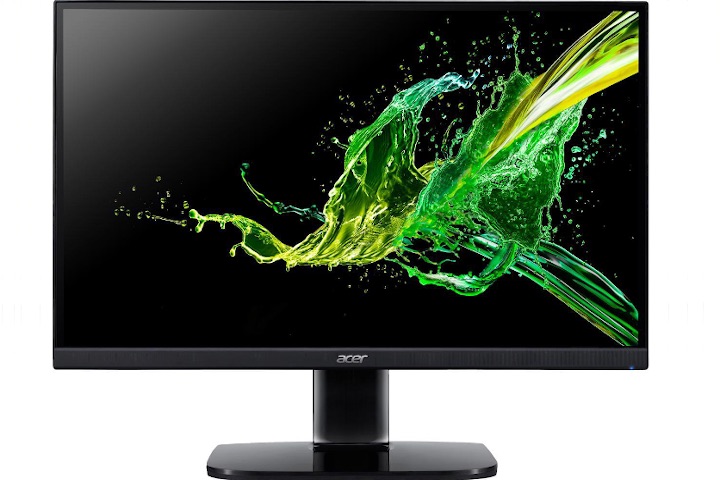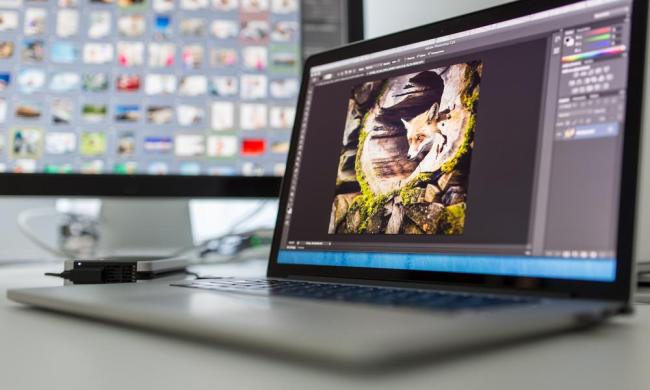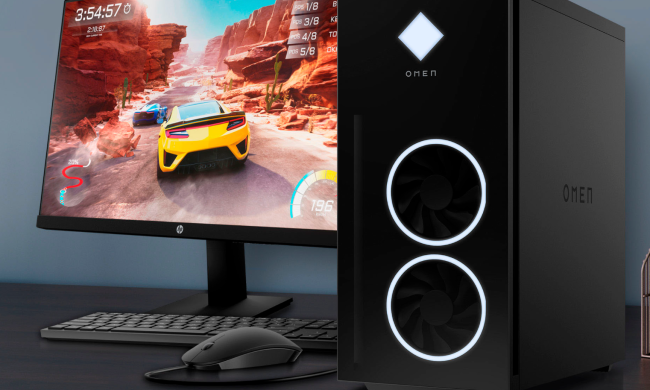If you’ve ever experienced screen tearing in a PC game, you know how annoying it can be — an otherwise correctly rendered frame ruined by gross horizontal lines and stuttering. You can turn on V-Sync, but that can be detrimental to system performance.
Nvidia and AMD have stepped up to solve the issue while preserving frame rates, and both manufacturers have turned to adaptive refresh technology for the solution. That often leads to a very obvious recommendation: If you have an Nvidia GPU, use G-Sync. If you have an AMD GPU, use FreeSync.
But if you have a choice in monitors or graphic cards, you may be wondering exactly what the differences are and which syncing technology is best for your setup. Let’s break it down to reveal which is a better option for you.
Performance
G-Sync and FreeSync are both designed to smooth out gameplay, reduce input lag, and prevent screen tearing. They have different methods for accomplishing these goals, but what sets them apart is that the former keeps its approach close to the vest, while the latter is shared freely. Nvidia’s G-Sync works through a built-in chip in the monitor’s construction. FreeSync uses the video card’s functionality to manage the monitor’s refresh rate using the Adaptive Sync standard built into the DisplayPort standard — the result is a difference in performance.
Users note having FreeSync enabled reduces tearing and stuttering, but some
Many fingers point at what might cause it, but the physical reason for it is power management. If you don’t apply enough power to the pixels, your image will have gaps in it — too much power, and you’ll see ghosting. Balancing the adaptive refresh technology with proper power distribution is hard.

Both FreeSync and G-Sync also suffer when the frame rate isn’t consistently syncing within the monitor’s refresh range. G-Sync can show problems with flickering at very low frame rates, and while the technology usually compensates to fix it, there are exceptions. FreeSync, meanwhile, has stuttering problems if the frame rate drops below a monitor’s stated minimum refresh rate. Some FreeSync
Most reviewers who’ve compared the two side-by-side seem to prefer the quality of G-Sync, which does not show stutter issues at low frame rates and is thus smoother in real-world situations. It’s also important to note that upgrades to syncing technology (and GPUs) are slowly improving these problems for both technologies.
Selection
One of the first differences you’ll hear people talk about with adaptive refresh technology, besides the general rivalry between AMD and Nvidia, is the difference between a closed and an open standard. While G-Sync is proprietary Nvidia technology and requires the company’s permission and cooperation to use, FreeSync is free for any developer or manufacturer to use. Thus, there are more
In most cases, you can’t mix and match between the two technologies. While the
If you go the Nvidia route, the monitor’s module will handle the heavy lifting involved in adjusting the refresh rate. They tend to be more expensive than Freesync counterparts, although there are now more affordable G-Sync
Most recent-generation Nvidia graphics cards support G-Sync. Blur Busters has a good list of compatible Nvidia GPUs you can consult to see if your current card supports it. Nvidia, meanwhile, has special requirements for G-Sync rated desktops and

You won’t end up paying much extra for a monitor with FreeSync. There’s no premium for the manufacturer to include it, unlike G-Sync. FreeSync in the mid-hundreds frequently comes with a 1440p display and a 144Hz refresh rate (where their G-Sync counterparts might not), and
Premium versions

G-Sync and Freesync aren’t just features; they’re also certifications that monitor manufacturers have to meet. While basic specifications allow for frame syncing, more stringent premium versions of both G-Sync and Freesync exist, too. If monitor manufacturers meet these more demanding standards, then users can feel secure that the
AMD’s premium options include:
- FreeSync Premium: Premium requires monitors to support a native 120Hz refresh rate for a flawless 1080p resolution experience. It also adds low frame rate compensation (LFC), which copies and extends frames if the frame rate drops to help smooth out more bumpy experiences.
- FreeSync Premium Pro: Previously known as FreeSeync 2 HDR, this premium version of FreeSync is specifically designed for HDR content, and if monitors support it, then they must guarantee at least 400 nits of brightness for HDR, along with all the benefits found with FreeSync Premium.
Nvidia’s G-Sync options are tiered, with G-Sync compatible at the bottom, offering basic G-Sync functionality in
- G-Sync Ultimate: Ultimate is similar to FreeSync Premium Pro, a more advanced option available on the more powerful GPUs and monitors that are designed for HDR support and low latency. It used to demand a minimum brightness of 1,000 nits, but that was recently reduced to demand just VESA HDR400 compatibility, or around 400 nits.
Conclusion
The G-Sync from Nvidia and the Freestyle feature from AMD both come with amazing features that can improve your game levels. Personally, when you compare the two, the G-Sync
If you eliminate the price for any additional components, you can expect to shell out a few hundred dollars on a G-Sync monitor, at least. Even our budget pick is available for about $330. Unfortunately, due to product shortages, prices can vary significantly for a compatible G-Sync
If you need to save a few bucks, FreeSync



